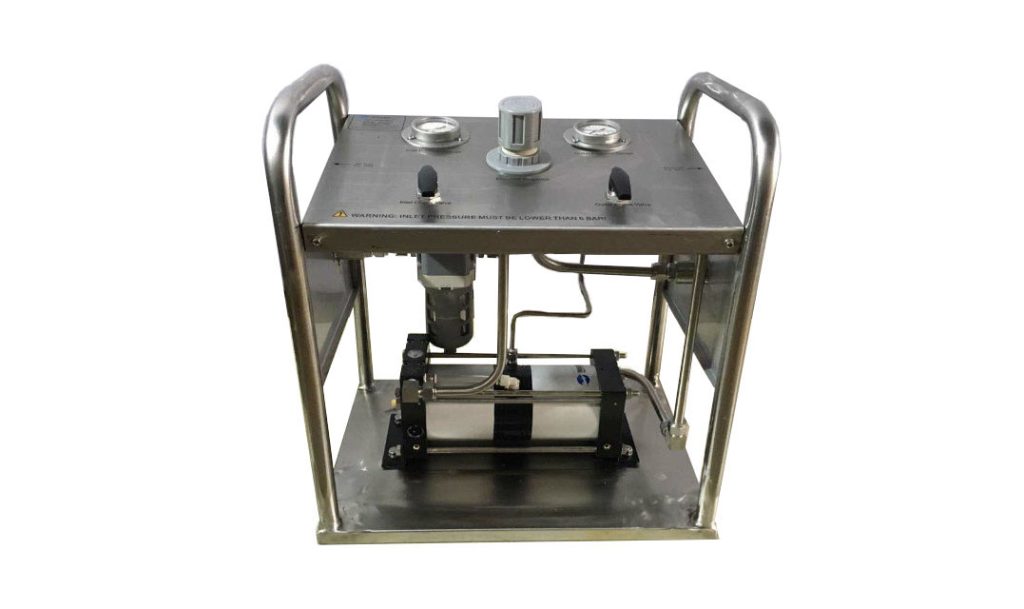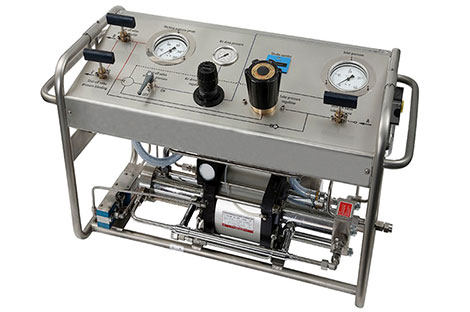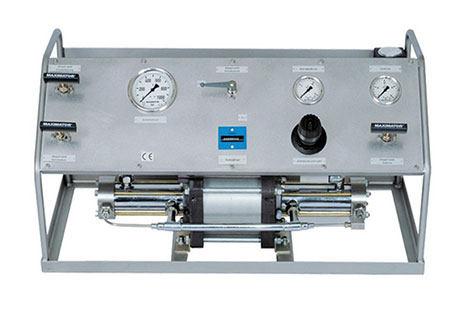Industrial principle of gas-liquid booster pump and other precautions
The working principle of the gas-liquid booster pump is similar to that of the pressure booster, which applies a very low pressure to the large-diameter air-driven piston. High pressure is created when this pressure interacts with a piston with a tiny surface area. The booster pump can achieve continuous operation thanks to a two-position, five-ventilation control directional valve.
Industrial principles of gas-liquid booster
The liquid is continually discharged by a high-pressure plunger that is controlled by a check valve, and the outlet pressure of the booster pump is influenced by the air drive pressure. The booster pump will shut off and stop using air when the pressure between the driving component and the liquid output part balances. The booster pump will automatically turn on and run until it reaches the pressure balance once more when the output pressure drops or the air drive pressure rises.
The automatic reciprocating motion of the pump is realized by a single air-controlled non-equilibrium gas distribution valve, and the gas drive portion of the pump body is built of aluminum alloy. In order to ensure the performance of the gas-liquid booster pump, the liquid receiving portion uses carbon steel or stainless steel depending on the media. The complete set of seals on the pump is also made of high-quality products.
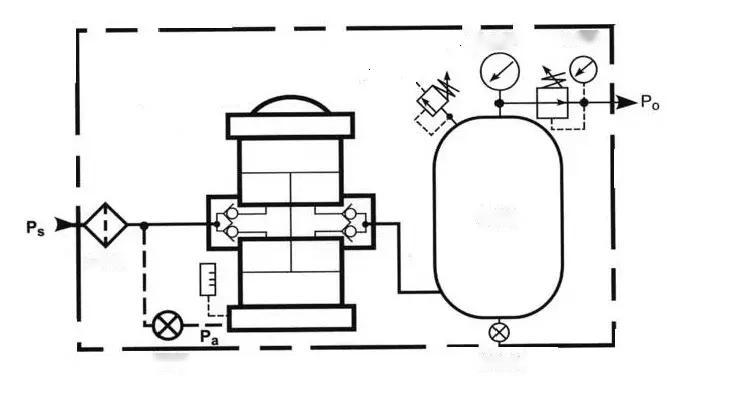
Usage notes of gas-liquid booster pump
Although the booster pump can technically be put in any position, it is advised to utilize the vertical installation method to guarantee the extended service life of the seal. Verify that the installed connector and pipe are within the pump’s acceptable pressure range.
The spool valve chamber is not where the drive air interface is located. The liquid pump is grease-lubricated, thus there is no need to install an air lubricator, but it is still required to install a compressed air filter and water separator. It is advised to keep using the air lubricator after the first use. A gas lubricator is needed if dry gas is utilized.
Ice will form when wet or high-humidity gas is utilized continuously. In this situation, it is advised to mount a water separator or dryer on the pneumatic drive pipeline. It is advised to use an oil mist if the driving air is very dry and the dew point is lower than -40 °C.
Because the nature of the medium affects the need for sealable materials and wetted parts, the customer’s medium choice must be taken into account when choosing the type of pump. Pressurized water or oil must follow standard design principles.
How does moisture enter the gas-liquid booster pump
The gas-liquid booster pump won’t produce gas on its own. It must be imported using external low-pressure gas equipment because it is simply a product designed to raise gas pressure. Line-driven, the connection between the two must be made through a pipeline, and low-voltage equipment may become visible while in use due to a variety of external factors.
There is water, and it will enter the gas pipe and air tank of the booster pump, causing water to enter the gas-liquid booster pump. Water will enter the apparatus on the apparatus through the input pipe. The front-end air supply equipment needs to be routinely inspected and cleaned if this issue is to be resolved. The water problem in the tank can be completely solved. After the preliminary work is ready, the later maintenance is left.
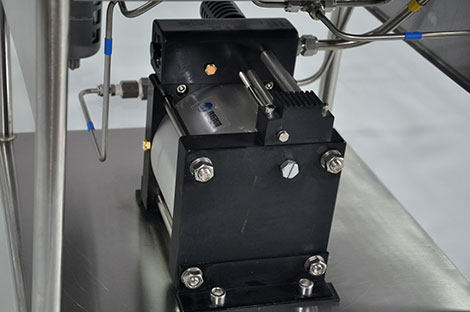
How to prevent water from entering the booster pump
1. The oil in the gas-liquid booster pump must always be maintained, and the gas-liquid booster pump must be routinely refueled (monthly inspection)
2. Consistently clear the booster pump’s surface of dust (the booster pump has a self-priming function, which is easy to suck the dust into the interior, causing a high-pressure seal and cylinder scratch)
3. To drain the water, regularly release the drain valve underneath the air tank (the gas will condense when the airflow is too large)
4. Regularly examine whether the high-pressure pipeline is old and whether the safety valve can be operated normally (once a year)
5. If at all possible, regularly replace the sealing ring (2 years – once)
Gas-liquid booster maintenance points
Key points of maintenance: The service life of the air pressurization system and the gas pressurization system will be impacted later on if maintenance is poor. As a result, after purchasing the pressurization system, be sure to consider whether the operating environment on-site is too dusty, whether a dust cover has to be placed, and whether the driving air source on-site has moisture. If it does, increase the time for the drier and filter.

